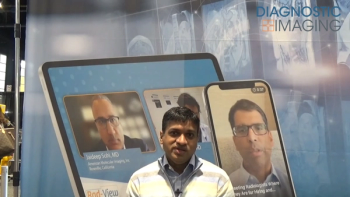
New Grid PACS architecture answers data management demands
Demands on information systems to manipulate 2D, 3D, and 4D images, provide video conferencing, and satisfy other evolving telemedical applications require advanced networking solutions. Grid computing has emerged as one answer.
Demands on information systems to manipulate 2D, 3D, and 4D images, provide video conferencing, and satisfy other evolving telemedical applications require advanced networking solutions. Grid computing has emerged as one answer.A recent paper from Greece proposes a data-centric network that employs Grid architecture to construct web PACS portals to meet contemporary radiology department data management needs (Conf Proc IEEE Eng Med Biol Soc 2007;1:6429-33). Grid computing is a hardware and software infrastructure capable of providing reliable, low-cost access to high-end computing."This architecture demonstrates greater computing and data storage capabilities by taking advantage of many networked computers operating as one, distributing process execution via parallel infrastructure," said George Koutelakis, Ph.D., an electrical and computer engineer at the University of Patras.The proposed architecture yields a large-scale computing network from inexpensive off-the-shelf servers and storage devices. All components perform as a logical portal platform for providing web PACS services, Koutelakis said."Each section of a hospital radiology department does not need autonomous computing power to process images," Koutelakis said. "Rather, each can obtain computing resources through an application server on the Grid." Provision of different services through distributed distinguished servers reduces the load that each server manages. In this way, PACS servers achieve service multitasking. Servers that accept images from modalities (Store requests), for example, are distinguished from servers that provides Query/Retrieve services to terminal users. Servers providing the aggregate of PACS services constitute a cluster of servers. Web PACS applications are developed by employing distributed/parallel algorithms. Thus, a user connected to the network can receive computing power, storage space, and other resources from other systems on the Grid. Requests are filtered through a virtualization layer, which identifies and allocates necessary resources. Assignments are based on priority and service level agreements.
Implementation requires three sets of applications:
- Grid middleware provides basic end-user application services.
- Web portal services implement and integrate distributed data management, remote task execution, and file transfer.
- PACS service applications, which handle images generated by modalities, exploit the web portal.
"Grid PACS is an effort to develop PACS services over a Grid platform to allow radiologists and clinicians to respond to new data management challenges efficiently," Koutelakis said.
The Grid solution could conceivably be expanded to the entire hospital, although a thorough enterprise cost-benefit analysis would first be required, he said.
Newsletter
Stay at the forefront of radiology with the Diagnostic Imaging newsletter, delivering the latest news, clinical insights, and imaging advancements for today’s radiologists.



























